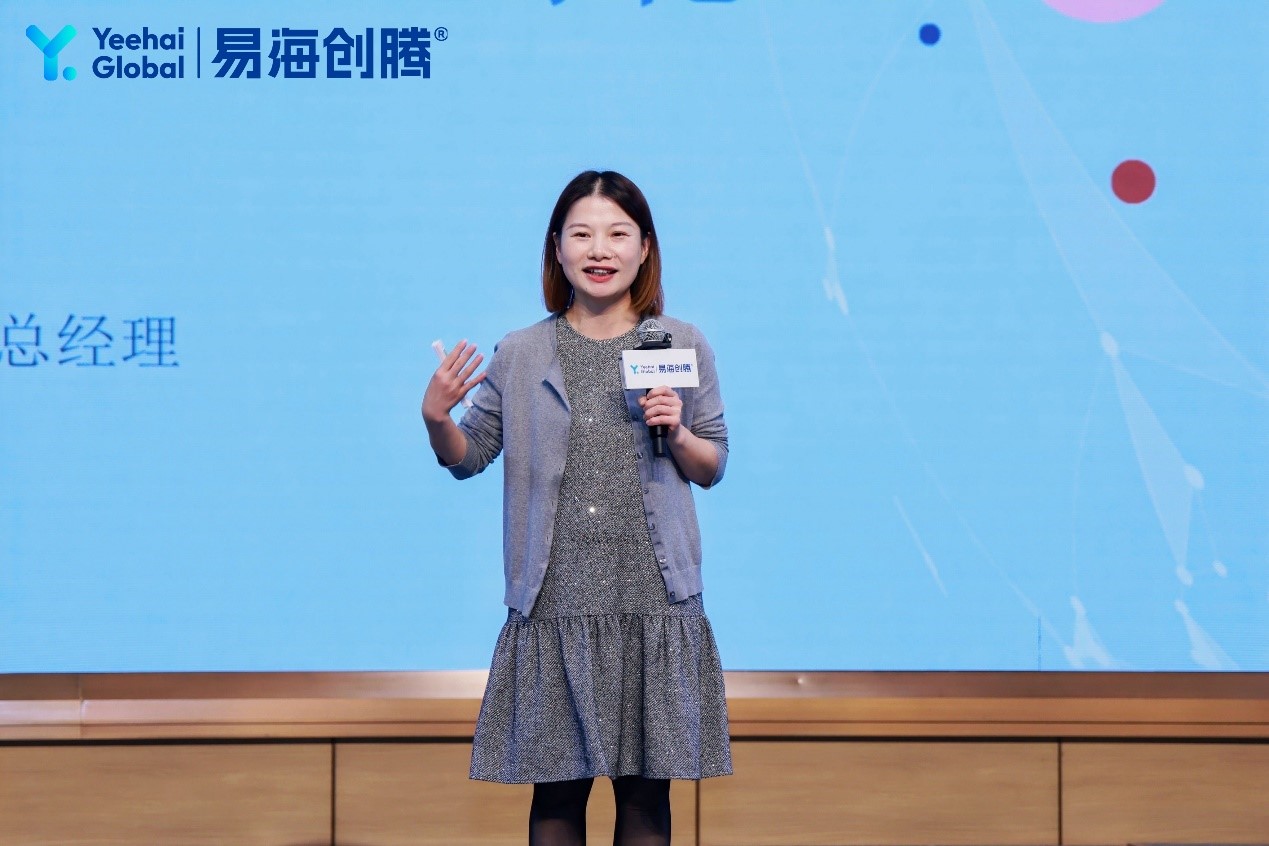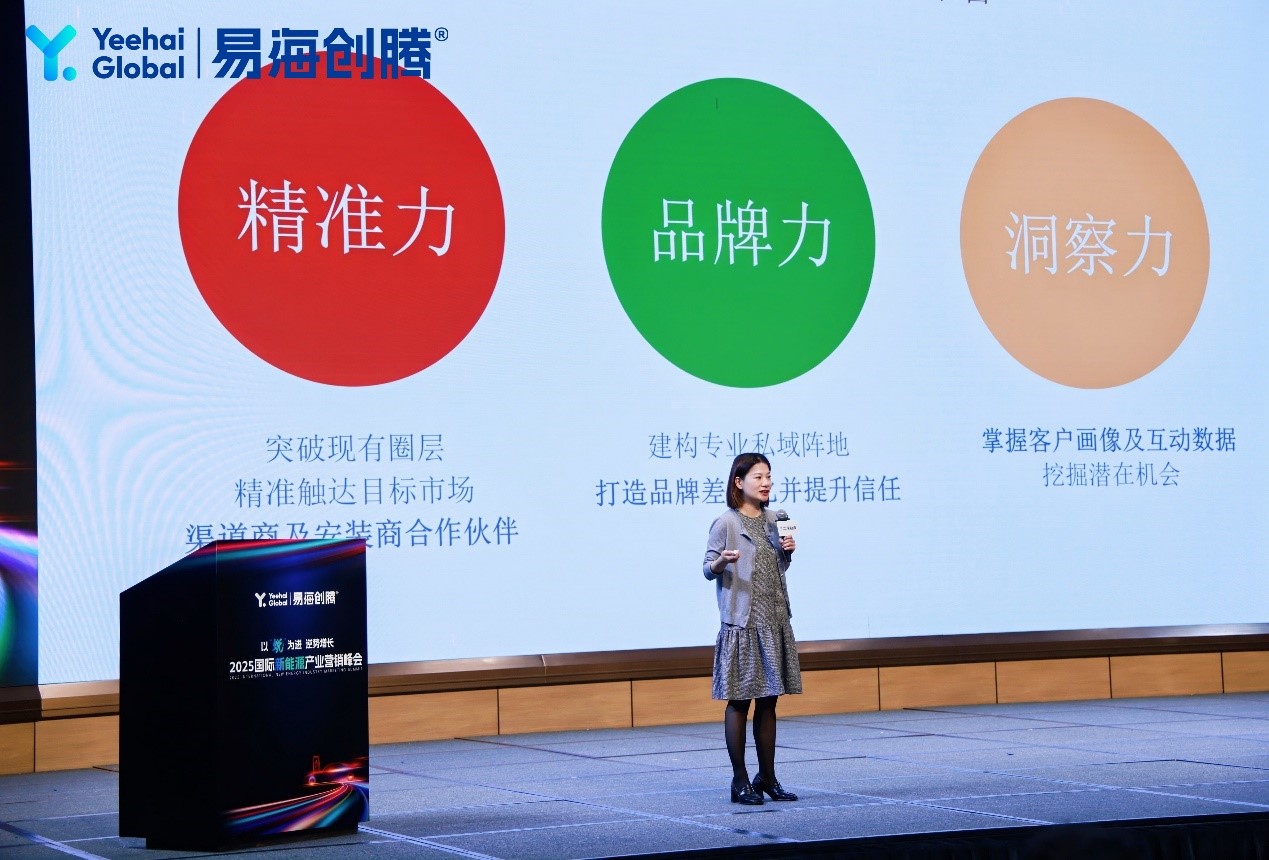At the recently held 2025 International New Energy Industry Marketing Summit*, Celia Huang, General Manager of New Business at LinkedIn Marketing Solutions, delivered a keynote speech titled "LinkedIn: Accelerating the Globalization of China’s Solar and Storage Enterprises." Drawing on her extensive cross-border marketing expertise, Huang introduced LinkedIn’s "Three-Core Competency Model" to empower Chinese new energy companies in global markets: Precision, Brand Power, and Insight.
Globalization Journey and LinkedIn’s Role
With years of experience collaborating with internationalizing enterprises, Huang outlined three evolutionary phases of Chinese companies’ global marketing strategies:
2000–2008: Reliance on cost-effectiveness to establish "Made in China" globally.
2009–2016: Transition to capital-driven internationalization.
Post-2016: Shift to capability-driven internationalization, emphasizing "deep integration" over mere market entry.
Today, 90% of China’s new energy enterprises maintain LinkedIn Company Pages, with most actively engaging on the platform. LinkedIn’s marketing team has partnered with 170–180 Chinese new energy companies, leveraging its network of 2.4 million industry professionals (including key decision-makers) and specialized groups covering solar, energy storage, inverters, and other sub-sectors to build targeted communities.

Picture: Celia Huang delivered a keynote speech on "LinkedIn Helps China's Optical Storage Enterprises Globalize"
The Three-Core Competency Model: Precision as the Foundation
Huang identified three critical challenges in global marketing: establishing brand differentiation, forging deep industry connections, and leveraging data-driven market insights. Her model addresses these through:
1. Precision: Targeting with Surgical Accuracy
LinkedIn’s database of 2.4 million global new energy professionals enables granular targeting based on geography, industry, role, and technical expertise. For instance:
Commercial & Industrial Storage Projects: Target C-suite decision-makers with skills in solar, PV, ESS, or EPC.
Residential Storage Projects: Identify distributors or installers by filtering for relevant industry tags (e.g., "energy storage integration").
2. Brand Power: From Products to Emotional Resonance
Huang outlined a three-stage brand-building framework:
Phase 1.0: Product-Centric Storytelling
Highlight unique product advantages and service capabilities to establish foundational credibility.Phase 2.0: Brand Personality
Once a follower base matures, differentiate through consistent content, brand narratives, and competitive benchmarking.Phase 3.0: Value Commitment & Emotional Connection
Foster trust through authentic stories from executives, employees, and partners. Huang cited CEOs with tens of thousands of followers who blend personal insights with industry thought leadership, earning recognition as "LinkedIn Top Voices."
3. Insight: Navigating Geopolitics and Policy Shifts
Amid the Russia-Ukraine crisis reshaping Europe’s energy landscape and the U.S. Inflation Reduction Act (IRA) redefining industry rules, Huang stressed the strategic value of LinkedIn’s analytics. The platform’s data reveals user behavior, content preferences, and market trends, enabling companies to pivot from product-centric pitches to solution-driven engagement.
Localization Alert: Respect Trumps Reach
Addressing the common pitfall of "high lead volume but low conversion," Huang shared a cautionary case: A client generated ample leads but failed to convert due to unprofessional communication tactics. She emphasized that Western clients prioritize respect and professionalism in initial interactions. Only when outreach demonstrates cultural sensitivity and clear value propositions will prospects engage meaningfully.

Picture: precision builds the cornerstone of globalization
Long-Termism: Building End-to-End Marketing Ecosystems
In today’s hypercompetitive global arena, Huang urged enterprises to adopt long-term brand strategies. Beyond sporadic campaigns, success requires integrating content creation, social media, live events, and virtual engagements. For example, companies attending trade shows can amplify impact through pre-event buzz, live streaming, and post-event recaps to sustain audience engagement.
Conclusion: A Blueprint for Sustainable Global Leadership
Huang’s insights offer a pragmatic roadmap for China’s new energy sector, underscoring the imperative of precision targeting, brand authenticity, and adaptive insights in global markets. As competition intensifies, only those embracing long-term vision and localized respect will secure enduring success overseas.
Footnote:
The 2025 International New Energy Industry Marketing Summit and the inaugural release of the "2025 China New Energy Industry Chain Core Competitiveness White Paper" were successfully held on Thursday, February 27, 2025, at the Shenzhen Guangming Cloud Valley International Conference Center. Hosted by Yeehai Global—a client-renowned digital marketing agency specializing in overseas markets—and co-organized by its resource platform China Exportsemi, the summit aimed to provide Chinese new energy enterprises with global expansion guidance, foster business collaboration platforms, and facilitate discussions on cutting-edge trends and commercial opportunities in the global new energy industry.
Related:
The 2025 International New Energy Industry Marketing Summit Was Successfully Concluded
The Battle for Charging Station Core Technology: How Chinese Companies Overcame Western Barriers to Lead the Industry
Data-Driven Expansion of New Energy: Dun & Bradstreet Unveils a New Path for Global Business Decision-Making
Europe’s Electric Truck Revolution Spurs 1.2 Billion kWh Energy Storage Demand
CEO of the Global Decarbonization Expo Decodes the New Paradigm of China and EU Green Cooperation
China's New Energy Industry at a Crossroads: Challenges and Pathways to Global Leadership
New Rules for New Energy Expansion: How to Break Out from an Overcrowded Market?






